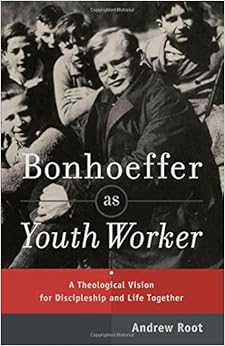I was a youth pastor from the age of 19 to the age of 24. During that time I estimate I read 30 to 40 books on youth ministry. Out of that number, I probably found about four or five of them to be actually helpful. Most of them were centered on pragmatic aspects of reaching youth, developing your speaking skills, and make your youth ministry more dynamic.
So I tried doing that. I tried designing a killer youth ministry in one of my first pastorates and it was an epic flop. We spent a lot of money on designing a youth room that would attract students, only to see students shift away from the youth ministry. I was baffled. I took it personally. It haunted me.
It was only at my next youth pastorate that I said, "Look, let's keep this simple. Love students. Teach the Bible. Reach out to others." We had almost no budget. We met in an old house (that was kind of scary). But you know what? We had community. We saw growth. It was amazing. It was like a gigantic family coming together. I have fond memories of my time as youth pastor there. More importantly, however, were the lessons I took away from that experience. Theology and relationship must play a dynamic role in youth ministry or it will die.
Which is why when I saw
Bonhoeffer as Youth Worker: A Theological Vision for Discipleship and Life Together by Andrew Root, I was excited to review it. Full disclosure: I had not read much of Bonhoeffer prior to this book (a few excerpts and a few pages of his
Ethics). So I was for a pleasant surprise that I had an ally in youth ministry I never knew about. I only wish I had had this book when I was a youth pastor. It would have quieted my mind on many sleepless nights when pondering if I was doing the right thing!
This is an odd book on youth ministry because Root takes you through Bonhoeffer's life (focusing particularly on his work with youth) and helps the youth pastor see ways to incorporate a deeper theological vision for his youth ministry. What you will not find in this book is a list of "how-to's" or "if you only do this you will see your youth ministry grow!"
Root argues instead for giving students space to figure out their theological convictions. We must be theologically adept and yet driven by truly being present (emotionally and spiritually) for students. We are not to adopt the position of guru but theological journeymen, where we come alongside students and guide them toward God.
The best chapter (and worth the price of the book alone) is "Eight Theses on Youth Work" where he outlines Bonhoeffer's eight main ideas concerning youth. Without giving them away, I felt that they were pregnant with philosophical issues that could easily be made practical. It was the most highlighted section of the book (for me) and one that I think is absolutely essential reading.
Are there areas of weakness that prevent this from being a five-star book? Yeah. There were a few chapters where I was left thinking, "So what?" When I finished the book, I was also left struggling on how to articulate some of the main points in it. I think this is more due to the nature of Bonhoeffer's thought than Andrew Root's writing though. The footnotes on some of the more esoteric discussions I found helpful. Also, I think the biographical nature of the book tends to overwhelm Root's discussion on youth ministry. I was looking for more of that and, unfortunately, I tended to get more biography. Finally, I found Root's own thinking on how we are to guide students theologically to be a bit ambiguous. I think Root purpo
These are minor quibbles, of course. The work is excellent itself. Part biography, part work on youth ministry
Bonhoeffer as Youth Worker is must reading for anyone involved in youth ministry. Even in areas where I disagree with Root, I love the overarching ideas presented. It is well worth a careful reading (or two)!
*Thanks to Baker Academic for providing me a free review copy of this book in exchange for a fair review.*

